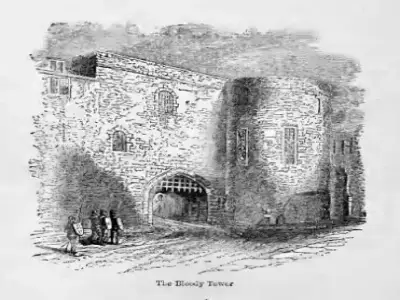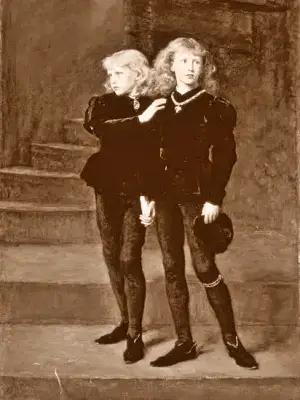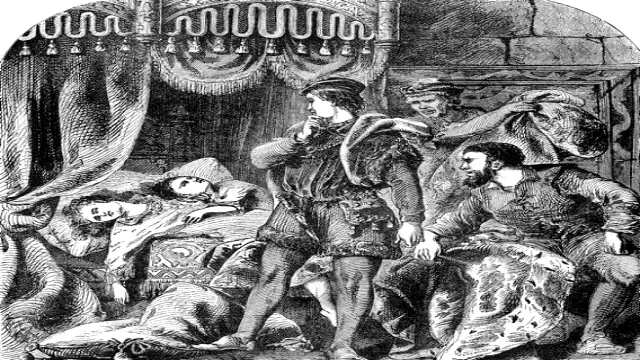The story of the Princes in the Tower is one of history’s most tragic romances. It has all the elements of a gripping tale: two orphaned brothers, locked away in the dark dungeons of the Tower of London. One brother is the King of England, but their wicked uncle usurps the crown. In a dark midnight plot, he arranges for the innocent boys to be murdered in their beds, hiding their bodies deep within the Tower.
Over the centuries, this tale has been embellished with details, making it hard to separate fact from fiction. We lack primary sources to confirm what really happened. An Italian named Dominic Mancini visited London in 1483. After returning to France, he reported rumors that Richard, the Duke of Gloucester, was suspected of killing his nephews.
The Rumors Begin
Mancini’s report may have influenced Guilliame de Rochefort, the Lord Chancellor of France, who repeated the rumor at the Estates-General in Tours in 1484. Another diplomat, Philip de Commines, wrote about Richard’s rise to power years later. He claimed Richard “barbarously murdered his two nephews” after becoming king.

However, not all sources are reliable. John Rous, in his Historia Regum Angliae, described Richard as a tyrant who usurped the throne and murdered his brother Edward IV. He even claimed Richard was born with teeth and long hair after a two-year pregnancy, which raises doubts about his credibility.
Cryptic Chronicles
The Grey Friars’ Chronicle offers a vague line about the princes being “put to silence.” This could mean they were killed or simply removed from public view. The ambiguity suggests the chronicler feared repercussions for his words.
The Continuation of the History of Croyland mentions rumors of the princes’ violent deaths but leaves the details uncertain. Robert Fabyan’s New Chronicle from 1483 also hints at Richard’s involvement, stating that common gossip suggested he had secretly killed the boys.

Shaping the Narrative
As time passed, the story evolved. Polydore Vergil, writing over twenty years later at the request of Henry VII, claimed Richard ordered the boys’ deaths to eliminate any threats to his rule. He described how Richard sent a lieutenant to carry out the murder, but the lieutenant hesitated. Instead, James Tyrrell was tasked with the grim job.
Tyrrell reportedly rode to the Tower and committed the horrific act, which Richard then tried to keep secret. He allowed rumors of the boys’ deaths to spread, hoping the public would accept his rule more easily.
The Tudor Influence
Sir Thomas More, writing for Henry VIII, added more drama to the tale. He described how hired thugs entered the boys’ chamber at midnight, smothering them in their beds. This vivid account, along with Shakespeare’s portrayal of Richard III, solidified Richard’s reputation as a murderous villain.
During the Victorian era, the story gained even more traction. Artists created sentimental paintings of the two boys, depicting them as innocent victims. Their pale faces and golden curls became symbols of lost childhood and royal tragedy.
Attempts to Rehabilitate Richard III
Despite the negative portrayal, some have tried to clear Richard’s name. Horace Walpole published Historic Doubts on the Life and Reign of Richard III in 1768, questioning the accepted narrative. Others followed suit, including Sir Clements Markham in 1906. In 1924, the Richard III Society was founded to reassess the king’s legacy.
Conclusion
The story of the Princes in the Tower remains a haunting mystery. While many details have been lost to time, the tragedy of the two young boys continues to captivate our imagination. Their fate, intertwined with the ambitions of powerful figures like Richard III, serves as a reminder of the dark side of history.
As we explore this tale, we must remember that history is often written by the victors. The truth may never be fully known, but the story of the Princes in the Tower will always resonate as a heartbreaking tragedy.

